Olafur Eliasson: beyond the surface
ho
We delve into the Icelandic artist’s retrospective at Tate Modern and weight up the controversies that his work generates.
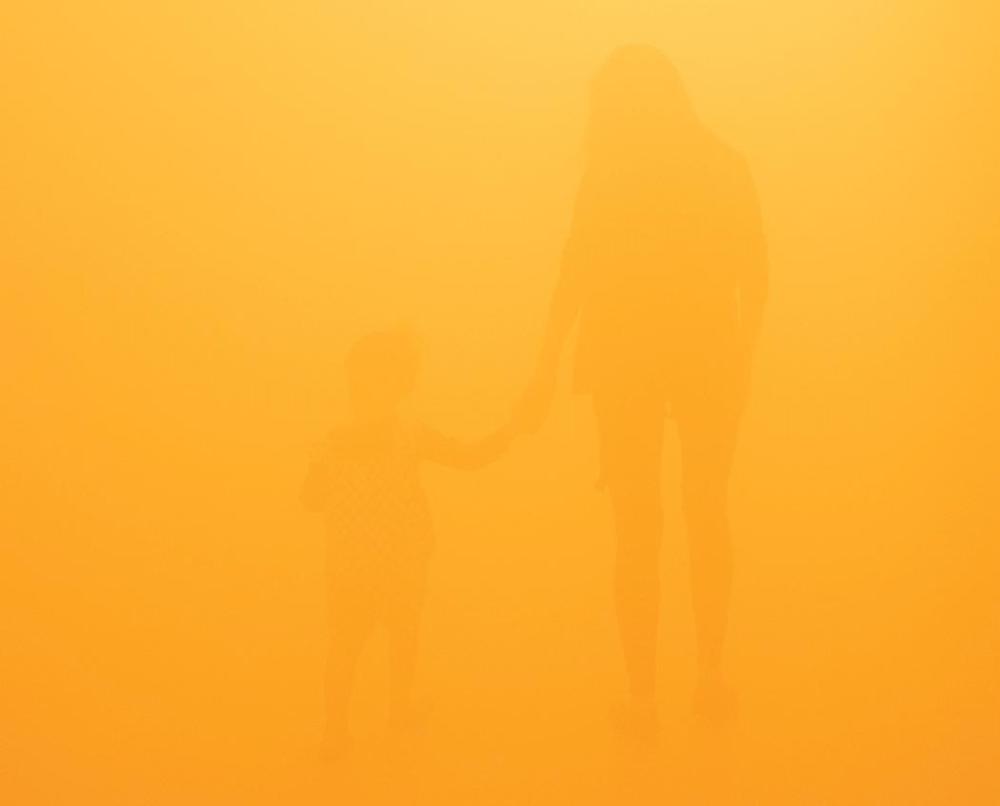
There is something magical about nature: in the patterns, the shapes, the behaviour of plants, water and light. In the context of planetary emergency we are currently living, Olafur Eliasson’s focus in all these through his art and research is not only relevant but necessary. Honouring his Icelandic roots, and reflecting on the overwhelming nature of the nordic island where he spent his childhood, Eliasson’s work, now on view in a retrospective at Tate Modern in London until the 5th of January, is an ode to the beauty, the magic, the geometry, the structures and the power of the natural world, and a reminder of a universe that is in danger.
Throughout more than two decades, the artist has been researching natural details and phenomena and re-envisioning them in urban and gallery settings working with a multidisciplinary team. Taken out of their context, these details perform as natural “readymades” and make us question, beyond their beauty, what they conceal. Behind the surface of all his works, there are layers of references and connections to critical concerns which are interestingly laid out in the last room of the exhibition, called The Expanded Studio.
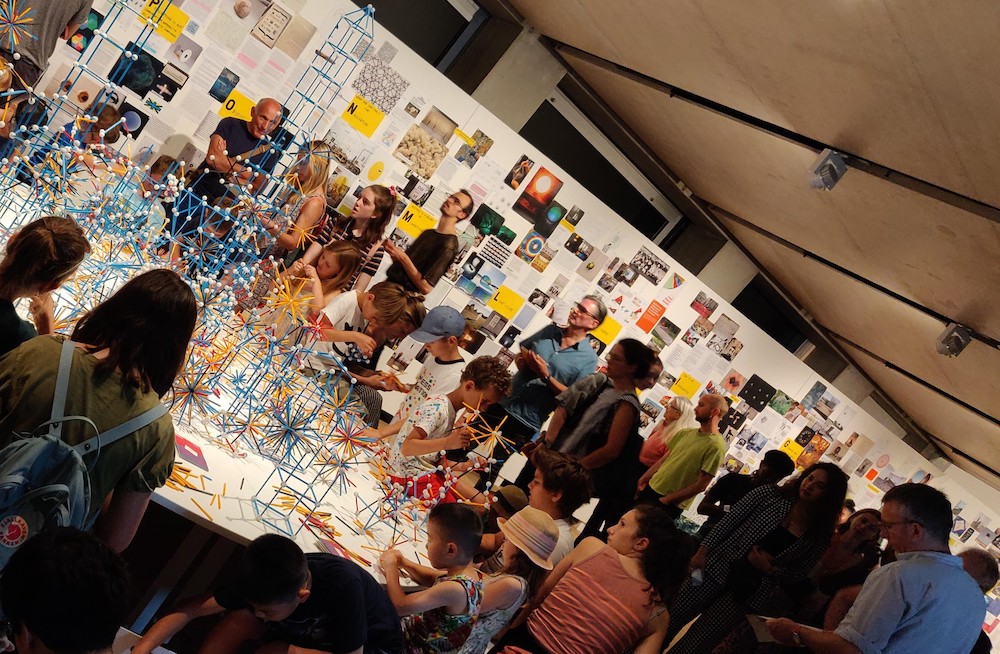
This section addresses the other work the studio does in parallel to producing artworks with a long mural mapping a handful of questions, clippings and resources around the studio’s research streams. These include the role of art and culture in society today, solar energy, climate action, migration, sustainable cooking, collaborative work, experimentation and social cohesion. The topics are also discussed in video interviews, studio visits and documentation available to browse in computer stations next to a deeply engaging children’s playing area with multiple sets of construction modules that is proving to be the star exhibit for the kids.
As powerful and inspiring as this final room is also the first room of the show, which is much more contemplative but serves as a slow introduction to Eliasson’s universe. Gathering hundreds of models and prototypes constructed in his studio over the years, the exhibit displays an artificial forest of geometric forms inspired by organic patterns and shapes, including blown up molecule structures that bring up questions of scale and perspective.
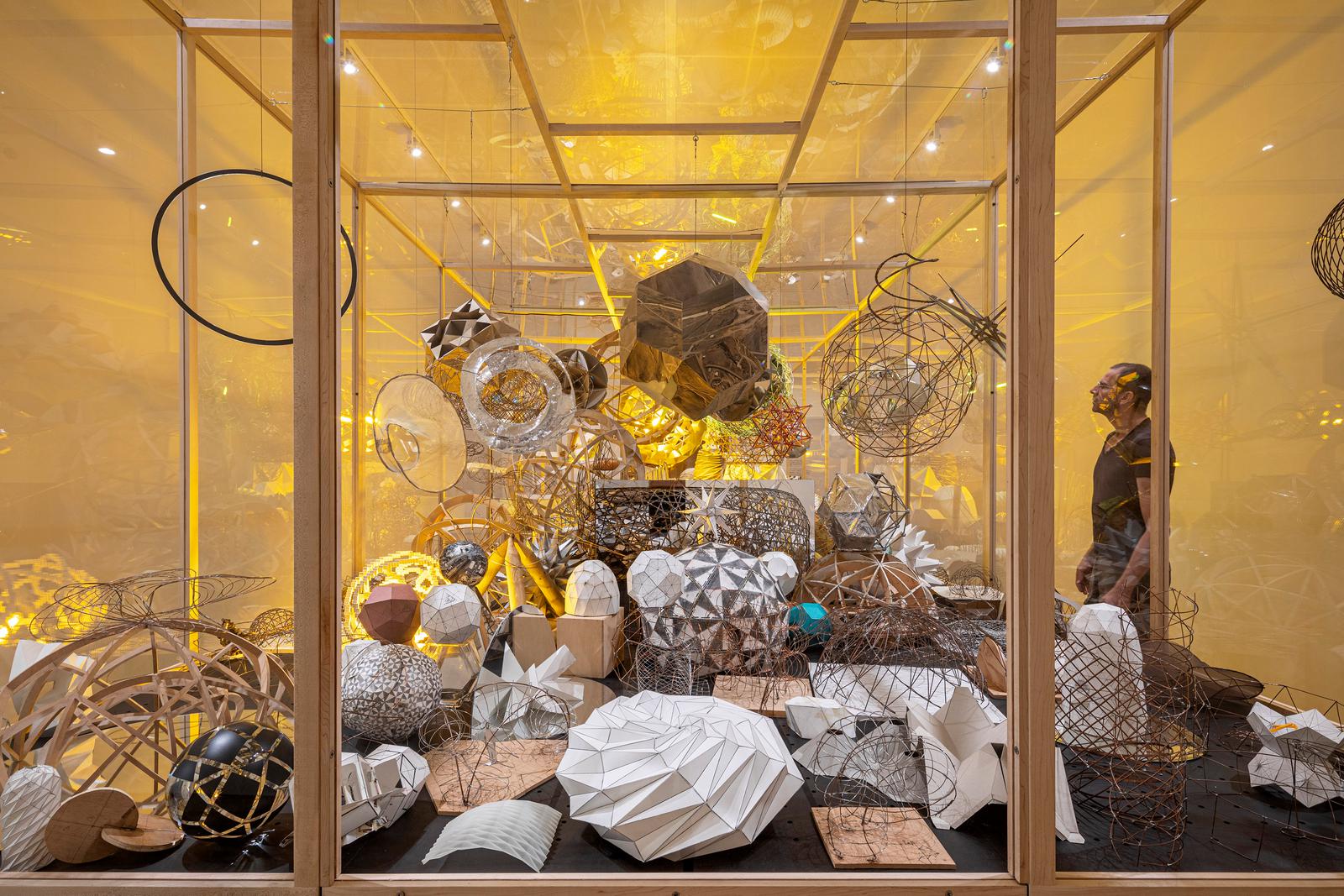
The play of perspectives and human perception is a constant device in Eliasson’s work and it is at play in several works in the show. On the elevators and hallways that lead us to it, there is a spin-off of The Weather Project, the impressive 2003 Turbine Hall commission where Eliasson built a fake fading sun that cast an apocalyptic orange light on all Tate Modern visitors. This time, a series of fluorescent lights render all skin tones into a similar yellowish hue. Eliasson loves to alter the given perceptions of reality and the self using light, as he also does with Your uncertain shadow (colour), which casts 3 coloured shadows on every visitor.
In his quest to reconfigure what we take for granted and suggest other views he also uses simple lens effects, as the ones at work in The seeing space or the kaleidoscopic views offered by Your planetary window and Your spiral view. Other works function more like studies, such as A description of a reflection, which follows the trace of light through a couple of reflecting mirrors creating a ghostly presence. Beauty and Big Bang Fountain, probably the most beautiful pieces in the show, also create a ghostly presence using light and water in a dark room. Beauty is a light shower that features all the colours of the spectrum and Big Bang Fountain captures the shape of water through shots of light, creating sculptures that last a friction of a second. Your blind passenger is also rather ghostly – if you can bear with the long queues that build up to experience it. If you do, you will find yourself walking through a fog passage where it is impossible to see beyond 1 metre.

The experiential blurriness of Your blind passenger is put into paper in Glacial currents, where Eliasson draws spheres experimenting with ink and the melting of ice. These spheres are polished in Colour experiment no. 81, circles that make a grading of a palette of colours borrowed from two Caspar David Friedrich’s works, connecting his work with the romantic painters and poets that, already wary of the effects of the first industrial revolution, were pointing back at nature at the beginning of the 19th century. These works take an abstract approach to nature and climate change that contrasts with the more documental The glacier series, a group of pictures that show the actual shrinking of the north pole. There is also documentation of Ice-Watch, which was staged at Tate Modern’s entrance in November, coinciding with the climate change conference COP24 and as a prelude to the show.
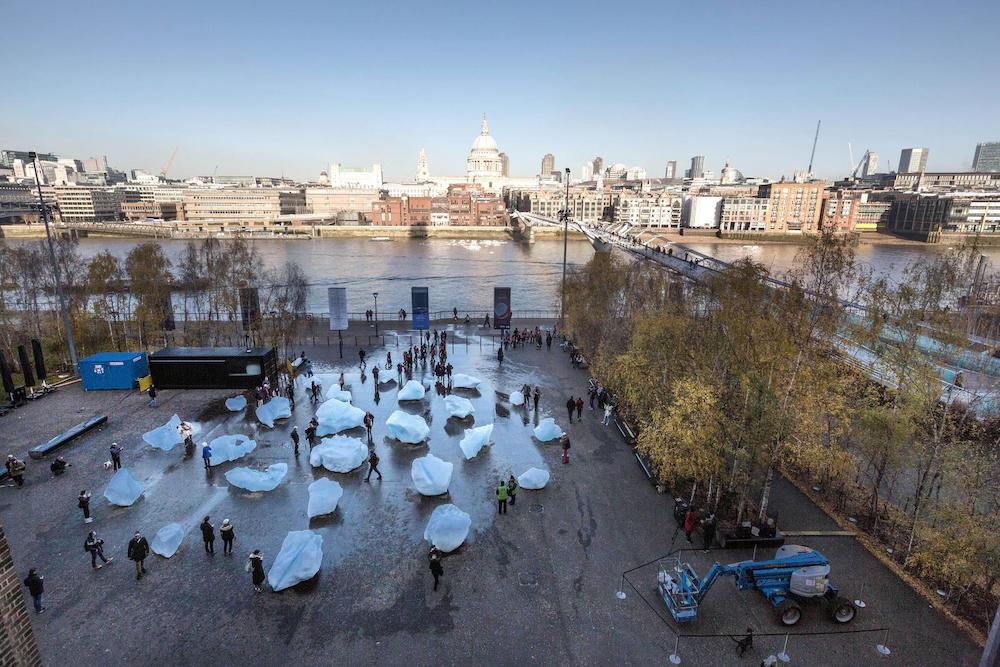
This work enabled visitors and passers-by the possibility to hear, touch and watch an actual piece of ice from the arctic melt in front of their noses, something that became a paradox in many ways. On one hand, it featured a group of ice sculptures of natural shapes that people could touch, which was not only unusual and magical to see, but also interesting to hear and smell, as the inner bubbles of air trapped in the ice popped open and released a chilly scent that had been captured for hundreds of years. This was a beautiful thing to experiment, but also a horrific reminder that this human accelerated melting is having a terrible impact on our planet. On the other hand, one of the causes of global warming is the burning of fossil fuels which enables transportation, which is necessary to transport works of art, especially if they need to travel from Greenland in massive fridges. Which brings us to the second paradox, does the ends of creating climate consciousness justify the huge carbon footprint of transporting and installing such a piece?
Some say these experiences belong to nature, where they happen naturally and there is no point in reproducing them. But the story of art is full of reproductions of nature. Storing, shipping and installing them has a comparable cost. Should we renounce to art for the sake of the planet? I believe the effects of experiencing nature has palliating effects and its beauty can be a trigger for people to do more to protect it. Hosting an installation like Ice Watch or an exhibition like In Real Life had a big cost for Tate and for the planet, but I am sure there will be a fair return we are not quite taking in because it is difficult to quantify. Proof of it is that, as a result of their involvement with Olafur Eliasson, Tate has set out specific plans to reduce their carbon footprint. While it is true that many people don’t need to actually see a block of ice melt to realise about climate change, the reality is that many people do and that public art is another tool for environmental activism. What should art do if not making us see something in a different light, touch us, change our perspective?
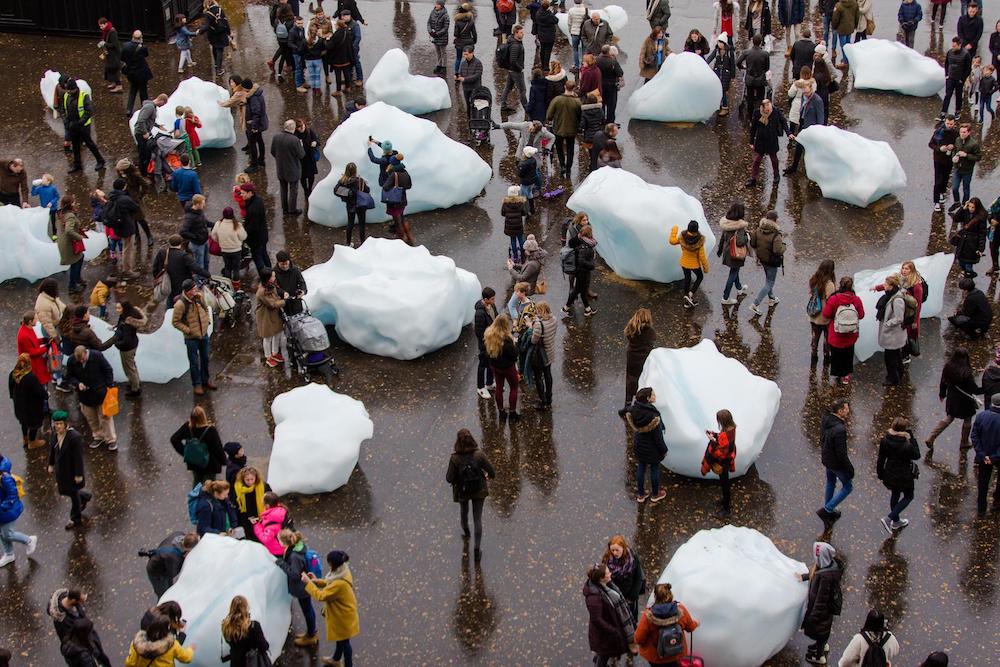
Connecting nature with artifice through science and art, and making us realise how embedded we are with nature and how apart we have come from it, Eliasson’s works are also beautiful to see and to experience, and it is difficult to avoid the temptation to capture them. But there is also a depth to them, they are the result of an ongoing research and critical concerns that are being articulated in conceptual ways throughout the show and rather directly in the last room. The show speaks about the multiple layers of reality, of the visible, of one’s personality, and besides all remind us of the power, the wisdom and the beauty of the natural world we have taken for granted and that future generations might not be able to experience “in real life”.
Olafur Eliasson: In Real Life is on view at Tate Modern until January 5th, 2019
Author: Sol Polo